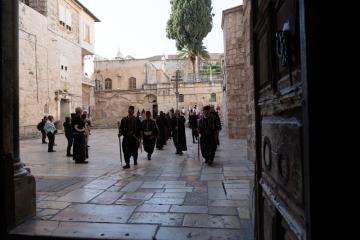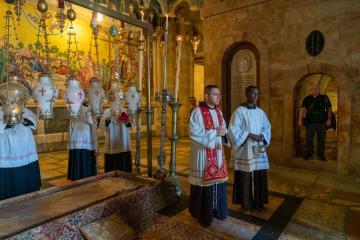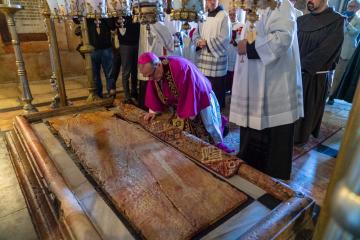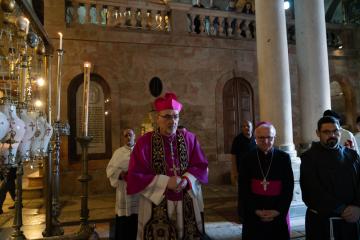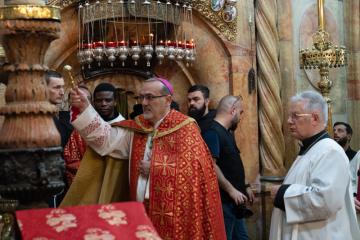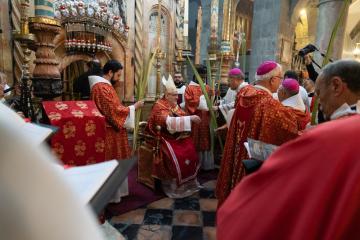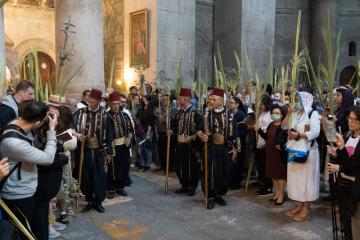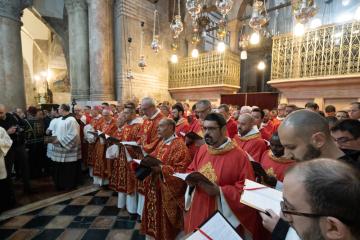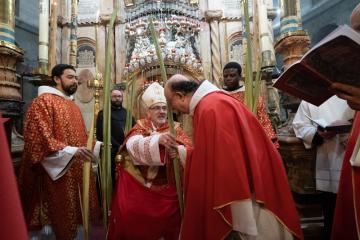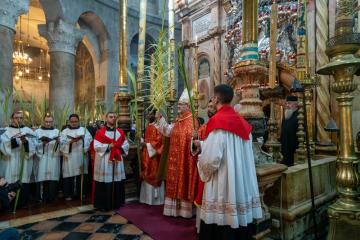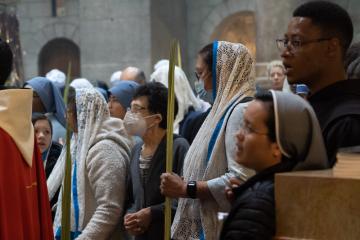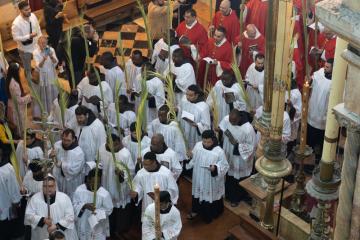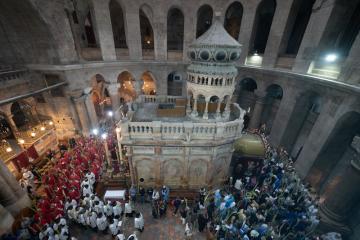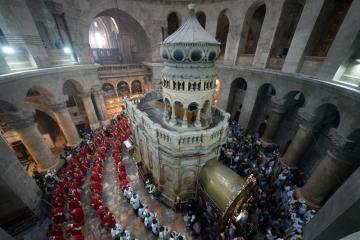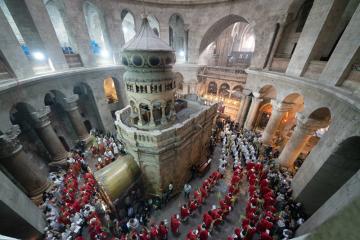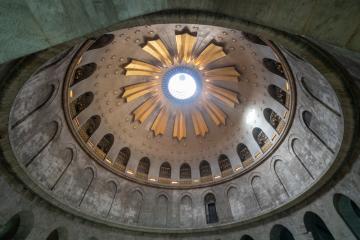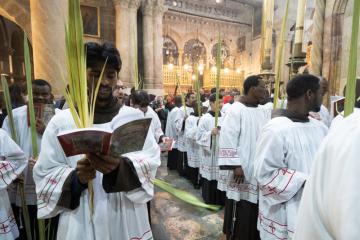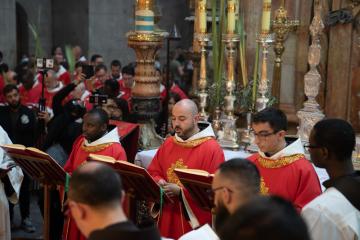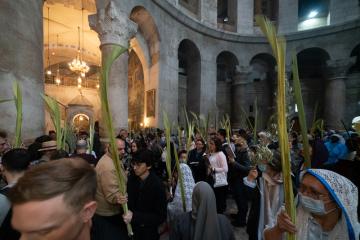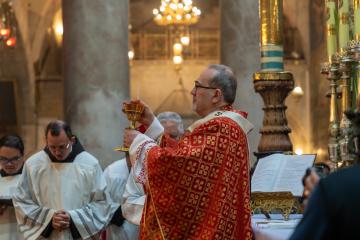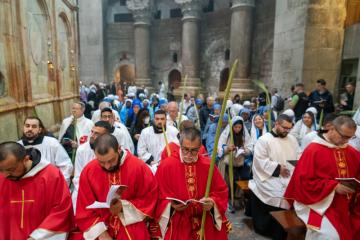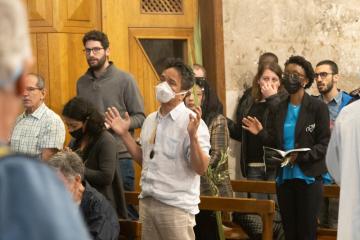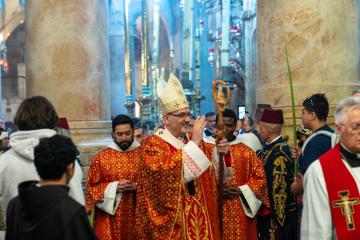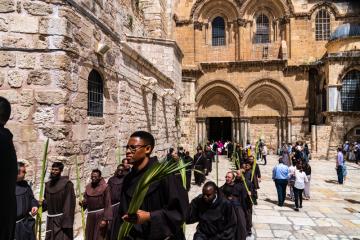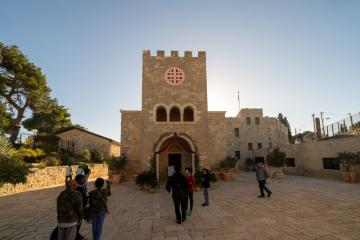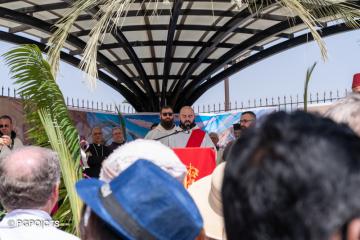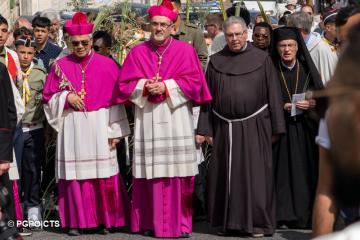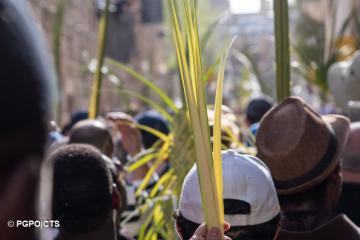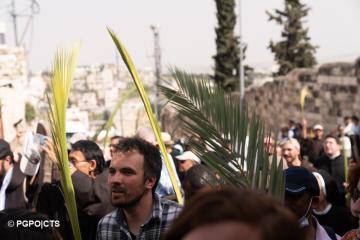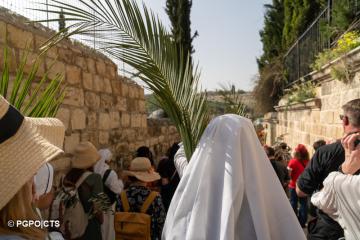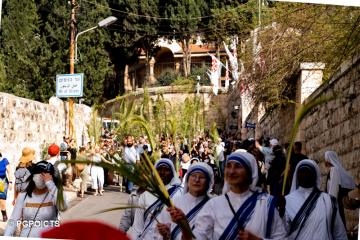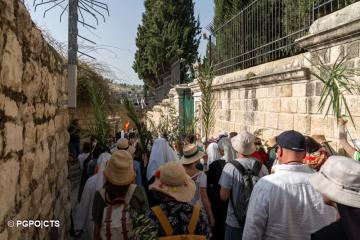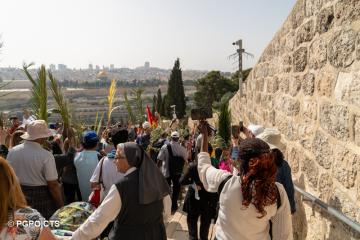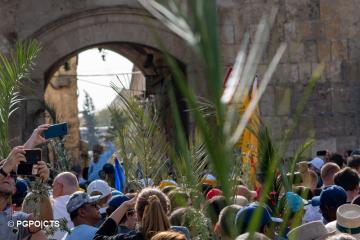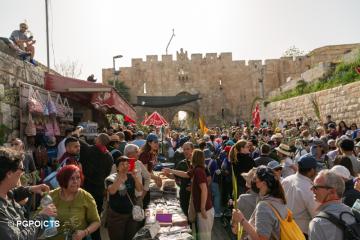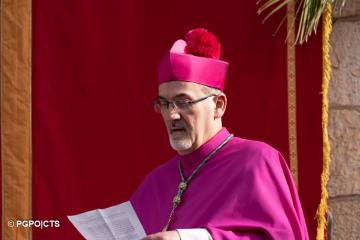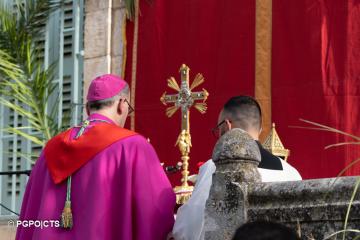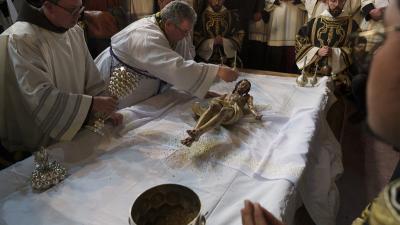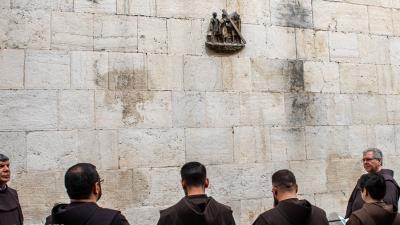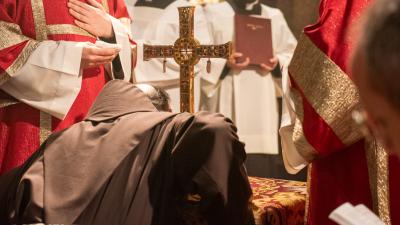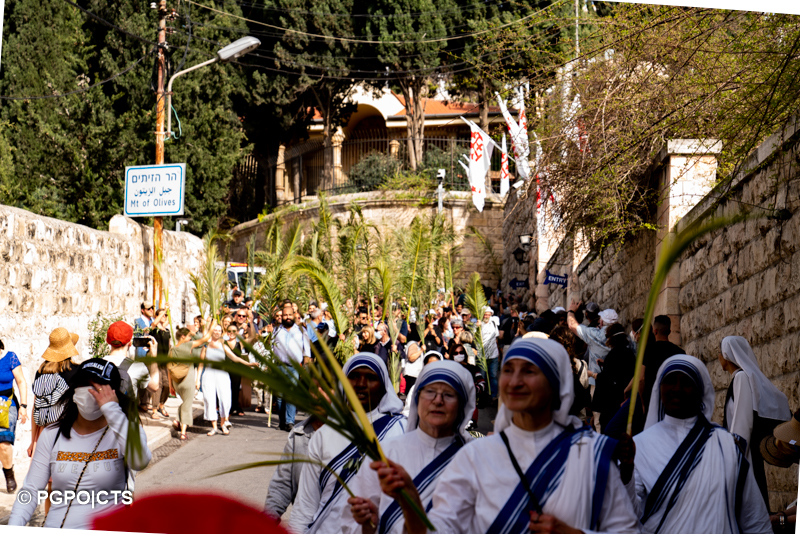
The various events that mark Palm Sunday in Jerusalem and which bring together thousands of festive faithful for the start of Holy Week took place on Sunday 10 April in a climate of rebirth and hope.
The day opened in the Basilica of the Holy Sepulchre where the solemn mass, presided by the Latin Patriarch, Mons. Pierbattista Pizzaballa, started the celebrations which did not come to an end until the evening, in the courtyard of the Basilica of St Anne, when the traditional procession on the Mount of Olives was over.
On this festive day, the Church of Jerusalem commemorates the entrance of the Lord into the Holy City, an event which is narrated by all the four canonical gospels. According to the evangelists’ story, Jesus entered Jerusalem on a donkey, accompanied by a festive crowd that were waving palm branches and acclaimed him crying out “Hosannah!”
"Today we are entering Holy Week,” the Patriarch told the faithful who gathered in the evening at St. Anne’s, “and in a few days’ time in the liturgy we will be celebrating the memory of the death and the resurrection of Jesus, we will be celebrating the events of the redemption and salvation which historically took place here in Jerusalem and which have reached the whole world..”
Mass at the Holy Sepulchre
The ceremony in the Basilica of the Holy Sepulchre is characterized by the solemn mass held in front of Christ’s tomb, by the blessing of the palms and the sprigs of olive tree and by the procession which for three times goes around the edicule of the Anastasis. The number three is naturally not by chance and intends to symbolize the three days that separated the Lord’s death from his resurrection. In the mass, the Gospel of the Passion according to Luke was read.
Procession from Bethphage to Jerusalem
An event which attracts great numbers because of the evocative power it arouses in the faithful is the procession which takes place in the afternoon of Palm Sunday, covering the way taken by Jesus to enter the Holy City. Starting from the shrine of Bethphage, on the top of the Mount of Olives, the procession, led by the Patriarch, moves towards St Stephen’s Gate to end in the courtyard of the church of St Anne. Each year, the procession brings together thousands of jubilant pilgrims, united in the spiritofjoy that in this same spot the crowd expressed in acclaiming Jesus.
In the shrine of Bethphage, facing the procession on the point of leaving, the passage from the Gospel that relates the entrance of the Lord into Jerusalem was proclaimed: “and now as he was approaching the slope of the Mount of Olives, the whole multitude of his disciples began to praise God aloud with joy for all the mighty deeds they had seen. They proclaimed, “Blessed is the king who comes in the name of the Lord: Peace in heaven and glory in the highest!” (Luke 19, 37-38).
This year there were fewer pilgrims than in the years before the start of the pandemic, but there were definitely more if compared to the numbers of the past two years. In 2021, only the local Christians took part in the procession; on the contrary, this year there were faithful from various parts of the world, showing that, although timidly, the Holy Land is beginning to welcome tourists once again. It is estimated that close to five thousand people took part; they included many religious and very many local faithful. However, the presence of groups of pilgrims from several parts of the world can be noted with prudent enthusiasm, which allows hoping for a gradual return to the normality of religious tourism.
Arrival at St Annes’s
Entering Jerusalem, the crowd went to St. Anne’s, in the courtyard of which the Patriarch of the Latins, Mons. Pizzaballa, pronounced a speech full of tension and hope, invoking peace for the city, inviting its inhabitants to fraternity and making an appeal to the union, against every form of sabotage that would like the Holy City to be the victim of “logics of possession and exclusivities” which have always afflicted it. “We, the Christian citizens of the Holy Land, cannot hope to separate our experience of salvation from the Holy City of Jerusalem. With this fine procession, of the young and the elderly, of men and women, of religious and lay people and with all the different ecclesiastical communities, today we assert once again our love for this City and our desire for peace and unity for it, our sincere desire for fraternity for all its inhabitants, without distinction.”
Filippo De Grazia


